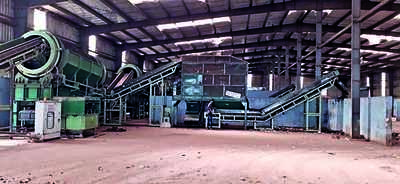- News
- City News
- hubballi News
- Solid waste mgmt in twin cities remains under par

Dharwad: The problem of proper disposal of solid waste continues to haunt Dharwad district. The government has enacted a law for scientific management of solid waste and released special funds to local bodies. With the increase in population there has been a constant rise in accumulation of waste and efforts by the civic bodies to dispose it of scientifically have not solved the problem.
As per the National Green Tribunal’s direction, the district level special task force committee has instructed all local bodies to lift garbage and arrange for transportation, segregation and disposal without delay. Even then one can find smoke emanating from heaps of garbage dumped near Lakamanahalli, Hosayallapur and other areas during summer. Foul smell emanates from the heaps during rainy season.
In Hubballi, one can see heaps of garbage near Ayodhya village on Karwar Road. The committee had recorded that the work on covering the yard by installing zinc sheets around it has remained incomplete. The pollution control board has issued notice to Hubballi-Dharwad Municipal Corporation (HDMC) for not disposing of garbage properly.
HDMC has 82 wards and daily 400 tonnes of garbage is collected. The civic body is using the wet waste for preparing vermicompost. But the solid waste that has been accumulated since several years continues to grow and the dump yard looks like a hillock.
Nagaraj, a resident of Hosayallapur in Dharwad complained that civic authorities are putting mud on the heap of waste to create an impression that it is a natural hillock. Fire engulfs the waste and plastic during summer and the smoke causes air pollution, he said.
In rural parts of the district things seem to be little better. In Alnavar, the waste is dumped on 4.3 acres of land on Kashenatti Road on the outskirts of the town. The local health supervisor said shortage of labour was causing difficulties in proper disposal of waste. Vehicles have been provided to collect garbage from homes in all the four gram panchayats of Alnavar taluk and each household has been provided buckets to store dry and wet garbage separately.
In Navalgund, the waste disposal unit has been set up 5km from the town. While wet garbage is used for preparing vermicompost, plastic is sent to a cement factory and other solid waste is sold to scrap merchants.
In Kundgol taluk, waste management is left much to be desired as garbage disposal units have not been completely set up in 26 villages.
As per the National Green Tribunal’s direction, the district level special task force committee has instructed all local bodies to lift garbage and arrange for transportation, segregation and disposal without delay. Even then one can find smoke emanating from heaps of garbage dumped near Lakamanahalli, Hosayallapur and other areas during summer. Foul smell emanates from the heaps during rainy season.
In Hubballi, one can see heaps of garbage near Ayodhya village on Karwar Road. The committee had recorded that the work on covering the yard by installing zinc sheets around it has remained incomplete. The pollution control board has issued notice to Hubballi-Dharwad Municipal Corporation (HDMC) for not disposing of garbage properly.
HDMC has 82 wards and daily 400 tonnes of garbage is collected. The civic body is using the wet waste for preparing vermicompost. But the solid waste that has been accumulated since several years continues to grow and the dump yard looks like a hillock.
Nagaraj, a resident of Hosayallapur in Dharwad complained that civic authorities are putting mud on the heap of waste to create an impression that it is a natural hillock. Fire engulfs the waste and plastic during summer and the smoke causes air pollution, he said.
In rural parts of the district things seem to be little better. In Alnavar, the waste is dumped on 4.3 acres of land on Kashenatti Road on the outskirts of the town. The local health supervisor said shortage of labour was causing difficulties in proper disposal of waste. Vehicles have been provided to collect garbage from homes in all the four gram panchayats of Alnavar taluk and each household has been provided buckets to store dry and wet garbage separately.
In Navalgund, the waste disposal unit has been set up 5km from the town. While wet garbage is used for preparing vermicompost, plastic is sent to a cement factory and other solid waste is sold to scrap merchants.
In Kundgol taluk, waste management is left much to be desired as garbage disposal units have not been completely set up in 26 villages.
FOLLOW US ON SOCIAL MEDIA
FacebookTwitterInstagram
Looking for Something?

Start a Conversation
end of article
Visual Stories
Quick Links
Delhi Air PollutionDelhi TemperatureChennai WeatherBangalore TemperatureCovid vaccination centres in DelhiCoronavirus in DelhiRTPCR test in GurgaonHyderabad RainPollution level in BangaloreDelhi SmogDelhi TemperatureNoida AQIGurgaon AQI todayFire in MumbaiMumbai RainsCovid 19 RT PCR Test in NoidaDelhi AQI todaySrinagar encounter

